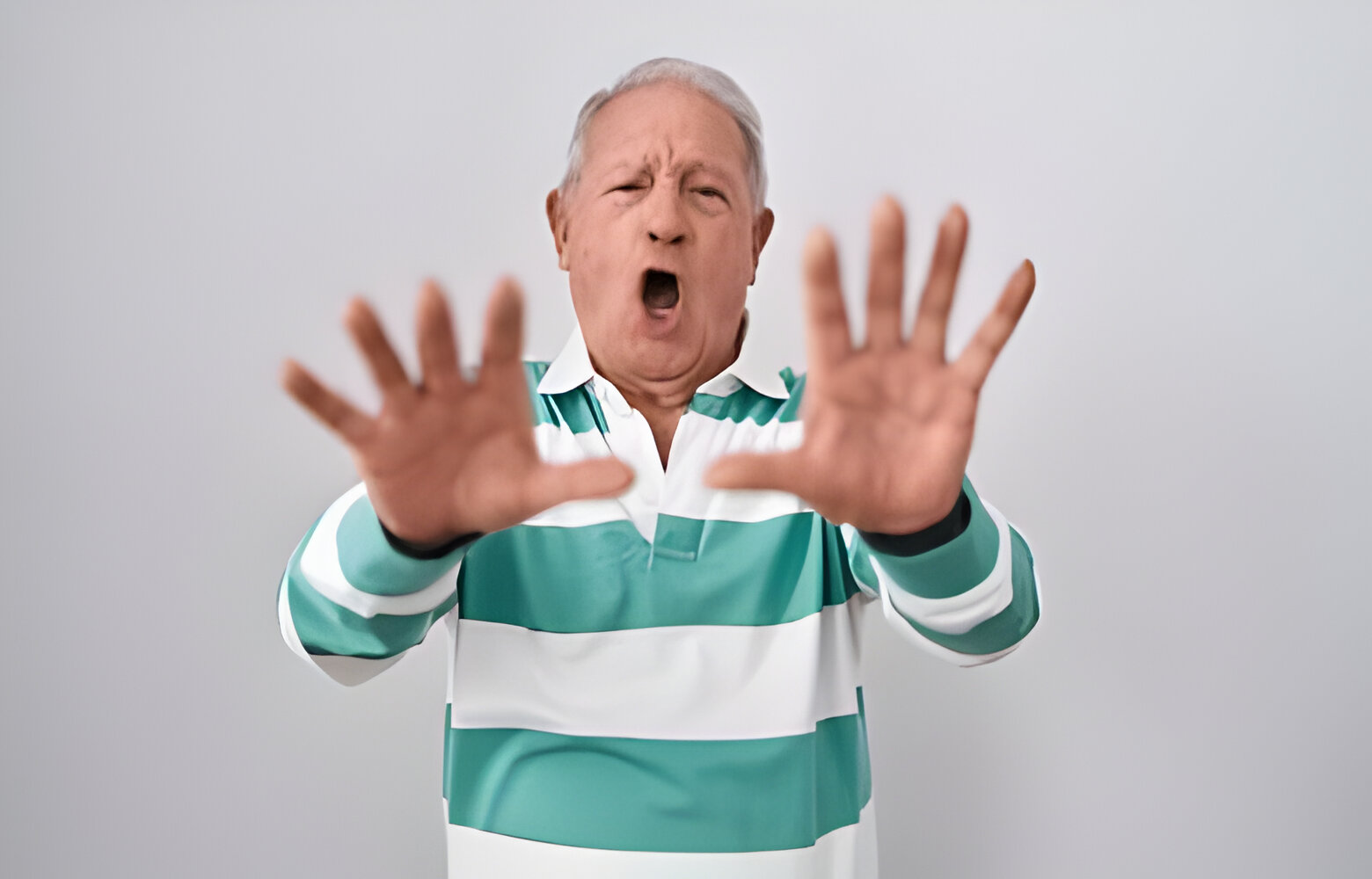Post-stroke aggression behavior could most likely be a suggestion of injury in some part of the brain. Such behavior raises too many questions for those affected and their caretakers. They are ever worried about issues like the time such foul behavior would take and whether there are treatment options regarding such a situation.
Causes of Anger Post Stroke
The emotional aftermath of a stroke can be as challenging as the physical effects. Stroke survivors usually experience a flare-up of anger, and evidence proves the following as the causes:
Mental Confusion
Changes in the brain can cause a stroke. With such changes, controversial arguments with others and perceptions of information and situations arise. It includes changes like being impulsive and lacking empathy, resulting in many bouts of anger.
Physical Limitations
Movement becomes complex in a stroke and could become an impairment in tasks usually carried out at most times. The fact that a stroke victim cannot perform an easily small, effortless task that he could do without even thinking over it can result in frustrations and, at times, anger in the victim. Stroke victims at a point may not find it easy to cope with changes in their lives that will keep them from participating in their cherished hobbies or activities.
Emotional Instability
It may also affect the emotional center of the brain and cause the development of a disorder called pseudobulbar affect. This condition results in unintentional and uncontrollable fits of crying, laughing, or anger, usually not corresponding to the events that precipitate them.

The Beginning Phases of Assertive Actions Post-Stroke
The immediate stage following the stroke, which is, therefore, called the acute stage, occurs when inflammation remains within the brain; this may occur from a day to a number of weeks after the stroke.
During this stage, immediate action needs to be taken to prevent further brain damage and keep the patient safe by providing emergency support for any complications that might occur.
Assertive behavior has been increasing day by day after the stroke, especially within the acute recovery phase. In one of the recent research studies including 202 stroke patients and from these patients, almost 35% of these patients manifest anger.
About 37% of these patients manifest anger of a higher level. Therefore, there are quite a few chances to observe assertive behavior in the initial days or weeks after the stroke.
Such behavior could take an assertive or combative stance and manifest itself in the physically explosive form of punches, kicks, biting, or even throwing. Moreover, this assertive type of behavior could be undertaken verbally, such as shouting, refusing treatment, or speaking in a hostile or unfriendly voice.
Most of these can probably be understood as significant disturbances from an emotional point of view, not just by the care providers or family members but also by the stroke survivors.
What Sparks Anger After Surviving a Stroke
Here are everyday situations under which you mainly may be provoked to anger after a stroke. So, to handle your anger effectively, it is where you will have to start:
Unable to Complete a Task
Mobility is still one of the biggest problems faced by many of the victims of stroke. Now, the work that they did without any hassle previously seems almost impossible. The individual might get angry when he cannot cook his meal or dress himself without help because that’s another thing he can’t do alone.
Communication Difficulties
Stroke can bring many other difficulties, like aphasia, which is a disorder that poses difficulty in expression. It might be tough not to be able to put your points across clearly or even understand others. You can get very isolated and full of anger.
Fear and Anxiety
Fear of being struck and anxiousness is the duo of the next thing to be experienced in the aftermath of a stroke. These will include fear of heart attack, fear of getting another stroke, fear of not making it to full recovery, and finally, the whole process being extremely costly in terms of medical care. Such feelings can elicit anger and act as a smoke screen to vulnerability.
Exhaustion or Disorientation
Usually, some troubled emotions occur, including anger, when a stroke seriously strikes a person. Weary bodies and major mental ups and downs from the effects of having a stroke do not usually allow a person’s threshold towards getting very frustrated to lower. They might respond in anger when, in other situations, they would have just let go.
Reactions to Others’ Actions
People with disabilities are forced to continue coping with thoughtless comments and out-of-the-blue unwanted obstacles. These incidents, through other people’s behavior, can create anger. For instance, when a person with mobility problems is either passed up or treated indifferently, he or she may part with some feelings of anger.
Nervousness and Sensory Overload
In the case of a stroke, there can be instant feelings as if there is an influx of anxiety or inability to cope with too much of anything, including large crowds, a lot of noise, or much activity. For example, the intensive hustle and bustle of a busy grocery store in and of itself can result in stress, inability to deal with it, and thus frustration.
Obstacles to Achieving Goals
Stroke recovery is a long-term process. During the recovery period, while improvement might be ongoing, a person who has disabilities that are an obstacle to personal goals or conducting daily activities is subjected to serious disillusionment. In this light, the constant battle with chagrin and frustration might further fuel the rage.

Managing Aggression Post Stroke
Some of the side effects that people are likely to show after a stroke include aggressive behavior. Such behavior can vary from patient to patient and at stages. Still, it may partly or wholly disappear a few days to weeks after the injury—a spontaneous recovery process. This occurs when the brain can repair itself and greatly improve some bad behaviors and disabilities.
During post-stroke healing, the brain’s neuroplastic mechanism works schematically. In other words, the mechanism enables the other part of the brain to compensate and take over lost functionalities.
But it can’t come passively; the brain must keep making an effort intentionally. An individual may seek help from a therapist or counselor who can help him or her understand and aggressively channel the behavior.
Coping Strategies for Post Stroke Aggressive Behavior
The treatment approach of handling aggression that comes out on the grounds of stroke can have a different dimension in response. These can include:
Identifying Triggers
Identify situations or actions that anger a stroke survivor. This will substantially help avoid them or prepare how to approach them, reducing the chances of an outburst.
Aggressive triggers are mostly individual-specific, so a person must never forget what triggers aggressive behavior. For example, a stroke survivor may feel angry when overwhelmed by an activity or too much stimulation. Therefore, it is advisable to avoid such circumstances or, in a case where escape is available, escort the person.
On the other hand, if they feel that they are not understood sometimes, perhaps leading to communication barriers to an extent, it makes people better positioned for the best way of talking to and understanding them.
Practicing Relaxation Techniques
Basic relaxation techniques and other exercises are responsible for the decrease in levels of stress and for the process of getting angry. Deep breathing, meditation, and yoga, among other relaxation exercises, are also able to make an individual’s life better and increase the ability, after stroke, to overcome such adverse effects as anxiety or depression.
Communication Strategies
Visual aids, maybe even pictures or gestures, can increase communication and reduce frustration or anger among stroke survivors. The easy language used to communicate the information can also aid stroke survivors in struggling to communicate easily. It will be of the utmost importance that the caregiver and loved ones be patient and understand character during communication with a post-stroke patient.
Physical Activity
Physical activity is much more than regular activity. It promotes relaxation, enhances mood, and reduces stress levels. It also impacts general health and helps in the recovery from a stroke. However, it is paramount that individuals consult with their health provider or therapist before starting any physical activity programming post-stroke.
Medications
In most cases, patients who show aggression will have some form of medicine that the doctor recommends. At most times, the medicine offers a way to balance moods, effectively reducing instances of having a burst of anger quickly. However, it is paramount that the patient has to use the medicines under the directive of a practitioner as some may respond with other drugs or side effects from the medication.
Conclusion
It becomes somewhat provoking to deal with unfortunate people who can understand that they live with disabilities, though it is not their fault. Living with a disability that is gained after a stroke, people get furious and may experience other negative emotions due to diverse challenges and barriers. However, there are effective ways and coping strategies for managing such feelings.

